Cinema's 5 greatest CG environments
We look back through the history of VFX, and explore the most amazing worlds CG artists have created.
The history of CG environments in cinema is a rich one, and in the last 35 years there has been a continued and unmatched development of technology and craft, which makes VFX the most exciting area of movie production today.
It's hard to imagine just how far we've come, but to put things in perspective, if you're lucky enough to own an iPhone, then you own a gadget that has 500 times the computing power of the machines they used to create TRON in 1980.
Any list is subjective, but in this post we've tried to capture the sheer breadth and possibility that CG affords film-makers, both today, and over recent decades. And you'll no doubt have your own suggestions, which we'd love to hear about in the comments below.
05. Bricksburg and beyond (The Lego Movie)
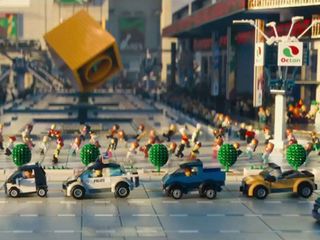
This may be a controversial addition to the list, but the environments in The Lego Movie were most notable for the fact that Animal Logic managed to convince millions of people that it was created using stop motion techniques, rather than 100% CG.
"We wanted people to believe that what they were seeing was something real, so we had to do a lot of research into what made stop motion film look real," explained Pablo Plaisted, Animal Logic's cinematographer on The Lego Movie.
Hard surface masterclass
The team had to research the visual language of stop motion to be able to then go on and recreate it in CG, and the end result was a hard surface masterclass. And the use of Lego, rather than hindering what was possible, actually freed up the team to be more creative in its interpretation of Bricksburg.
"Lego is such a creative medium, and there's so many things you can do with it," Aidan Sarsfield, Animal Logic's CG supervisor explained.
Get the Creative Bloq Newsletter
Daily design news, reviews, how-tos and more, as picked by the editors.
"That really came to the fore when we started animation. Despite the restraints, and despite the lack of tools (such as stretch and squeeze, for example), animators were actually freed up to bring in their own bricks, and you ended up with this great supporting cast of incidental 'stuff'."
04. The Grid (TRON & TRON: Legacy)
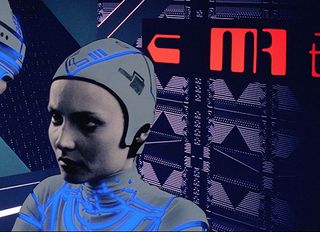
It's impossible to feature the best CG environments without also featuring TRON, in both its cinematic guises.
Originally thought up in 1976, TRON - taken from 'electronic' - was the brainchild of Steven Lisberger, an animator, producer and director. After seeing what was capable via games such as Pong, Lisberger began to flesh out the concept for a movie featuring electronic warriors.
Knowing the movie would be a costly affair, thanks to nothing similar every having being made before, Lisberger went about raising funds (via productions like 'Animalympics', for Warner Bros). But, as the true cost of what it would take to make TRON became apparent, the production team approach Disney in 1980 to secure full funding.
Pushing boundaries
The design work behind TRON was created by the late, great Jean Giraud (AKA Mœbius), but it was the digital terrain and vehicle shots that pushed the boundaries.
Using computers with just 2MB of memory, and 330MB of storage, four of the leading effects studios of the day (Information International, MAGI, Robert Abel and Associates and Digital Effects) created the film's various shots. The $13m stumped up by Disney, largely taken up by just over 20 minutes of digital footage, was a huge risk at the time, but $30m in takings helped establish CG as a new tool in the film-maker's arsenal.
Fast forward to 2010, and the release of TRON:Legacy. With almost impossible expectations to fulfill, Disney and director Joseph Kosinski released TRON's sequel. And despite mixed reviews, the evolution of The Grid, under Digital Domain and VFX Supervisor Eric Barba, was a joy to behold.
03. Andy's room (Toy Story)
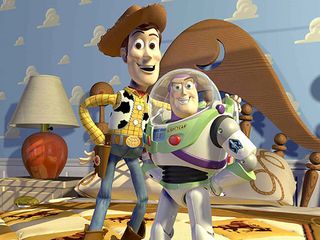
There was so much ground-breaking VFX work in Pixar's Toy Story that we simply don't have the word count to list it all here. However, one area that brought the movie considerable plaudits was the exquisite attention to detail within its environments, and nowhere was that more present than in Andy's room.
Tom Porter, using RenderMan's shader language, headed up the shader team at Pixar, which applied a unique layer of authenticity to Toy Story. Whether it was through scratches on a desk, wood grain on a skirting board, or a reflection in a toy's visor, these moments of imperfection and life-like detail elevated Toy Story above everything that had come before, and a lot that's come since.
Unprecedented scale
Toy Story was unprecedented in its scale. With a cast of characters numbering more than 70, and more than 1700 shots produced for the movie, the modelling, texture mapping, shading, and lighting took the production team over two years to complete.
And Tom Porter's verdict was a perfectly understated, but apt summary: "I'm not an optimistic person by nature," he said of the CG work in Toy Story, "but I'm very proud of this."
02. Middle-earth (Lord of the Rings trilogy)
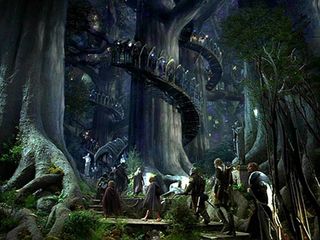
The realisation of Peter Jackson's vision for Middle-earth was one of the most anticipated moments in cinematic VFX, and what he delivered through Weta Digital is viewed by many as the best combination of modern VFX techniques that we've seen to date (including motion capture, live action, green screen, miniatures, compositing, matte painting, and much more).
"This movie is kind of an effects person's dream," said Jim Rygiel, visual effects supervisor. "We have miniatures, pyrotechnics, bluescreen, practical elements, and CG elements all mixed and matched."
Using the concept art of Alan Lee and John Howe as the starting point, around 270 visual effects artists worked on bringing the Lord of the Rings trilogy to life.
Unsung hero
From the mines of Moria to the elf haven of Lothlórien to Isengard to Mina's Tirith, each scene had to stand up to the scrutiny of Tolkien's original novels. And whilst Gollum and Weta's Massive Software (and its crowd simulation) was pulling in all the plaudits, Middle-earth was the unsung VFX hero of Jackson's movies.
"We've done every possible form of effect that there is on this film, whether analog or digital," Ellen M. Somers, associate producer, explained. "I don't think we've missed one technique yet.
"Normally there are four or five R&D items, things that need to be developed for a film. Maybe six or seven if you're really pushing it. For film one alone, we had 27."
01. Pandora (Avatar)
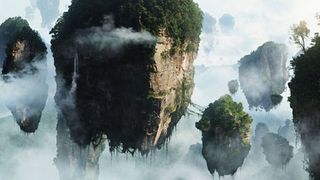
There's no better depiction of an entire ecosystem being produced exclusively in CG than James Cameron's vision for the jungle moon of Pandora, as realised by Weta Digital.
Weta Digital was responsible for two hours of the CG in Avatar, which was made up of almost 2000 shots, including all of the environment work for Pandora.
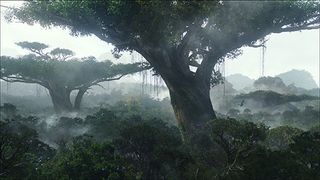
From the luminous forest, teeming with its glowing sprites, to the 'The Hallelujah Mountains', that float impossibly above Pandora's surface, this is a world into which the viewer is immersed from the outset, with every single shot rendered in beautiful CG.
Given the premise of Avatar, that a planet is directly connected through all its lifeforms, it's maybe no surprise that Weta modified its Massive technology, and instead of applying it to crowd scenes applied it instead to the plant-life of Pandora.
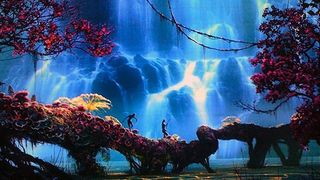
"It was very interesting. You could actually watch a forest grow in real time with this solution, and anything could grow just by painting colors on the terrain." VFX Supervisor Eric Saindon told CGSociety.
"With this elegant solution, the big trees would grow first, then the smaller trees would die off as the big trees took away the light, the smaller trees would fight for position, the ground cover would fill in where it could get light."
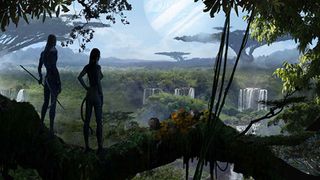
This kind of attention to each element of Pandora is what puts it head-and-shoulders above the competition for CG environments, and is what places it at number one in our list.
Win a trip to Los Angeles!
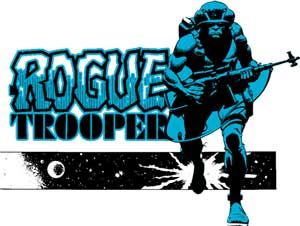
Masters of CG is a competition for EU residents that offers the one-in-a-lifetime chance to work with one of 2000AD's most iconic characters: Rogue Trooper.
We invite you to form a team (of up to four participants) and tackle as many of our four categories as you wish - Title Sequence, Main Shots, Film Poster or Idents. For full details of how to enter and to get your Competition Information Pack, head to the Masters of CG website now.
Enter the competition today!

Thank you for reading 5 articles this month* Join now for unlimited access
Enjoy your first month for just £1 / $1 / €1
*Read 5 free articles per month without a subscription

Join now for unlimited access
Try first month for just £1 / $1 / €1
Over the last 20 years, Dan has edited a number of print magazines and websites, including Computer Arts, 3D World and ImagineFX, and has written for publications including the Sunday Times, the Guardian, the Manchester Evening News, Manchester United Magazine, T3, and many more. He is currently the digital editor of Creative Bloq's sister magazine, Wallpaper*.
